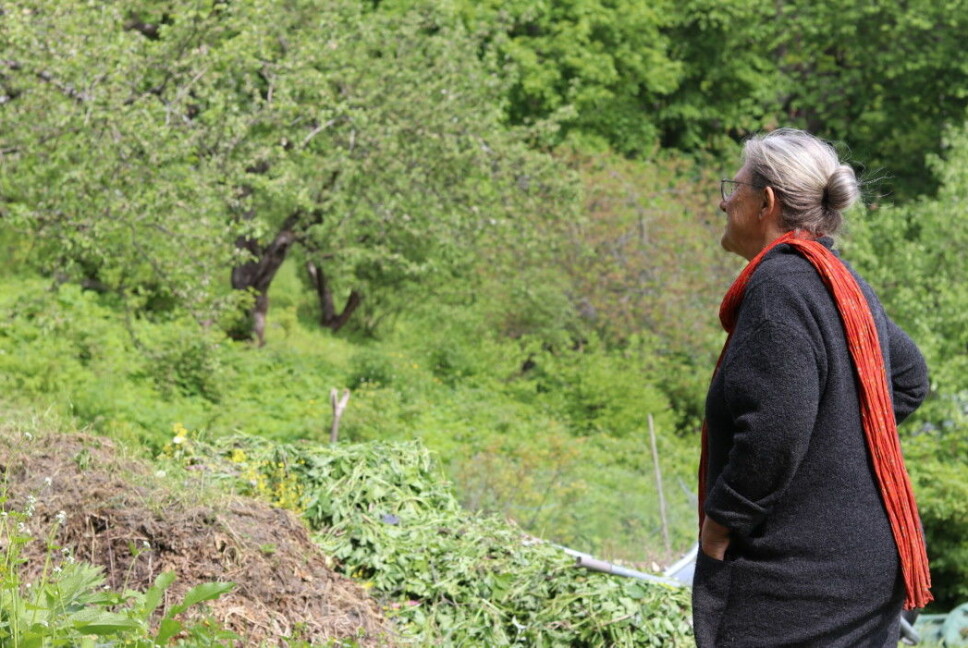
Here’s how you can make your own compost
Linda Jolly has been practicing organic gardening for 50 years. She explains how to make your own soil from garden and food waste.
Pretty much everything Norwegians pull from their gardens is either dumped in a pile in the woods, or driven to a recycling station.
But leaves, grass clippings, and plant and food waste can be turned into good compost soil for the garden. In this way nutrients will be recycled, and you don't need to buy new soil and fertilizer.
A teaching garden
Linda Jolly swears by compost. She is an assistant professor at the Norwegian University of Life Sciences (NMBU), and holds courses in vegetable cultivation and composting.
Jolly lives on a property at the King's farm in Oslo. She welcomes people who want to learn about organic farming.
«I have called my garden a teaching garden. People can come here to work. They can take away vegetables, so they learn as they work», she says.
The house sits on a green meadow, with blooming lilacs and good sun. Her garden beds are full of plants.
But it is her compost we’re here to look at.
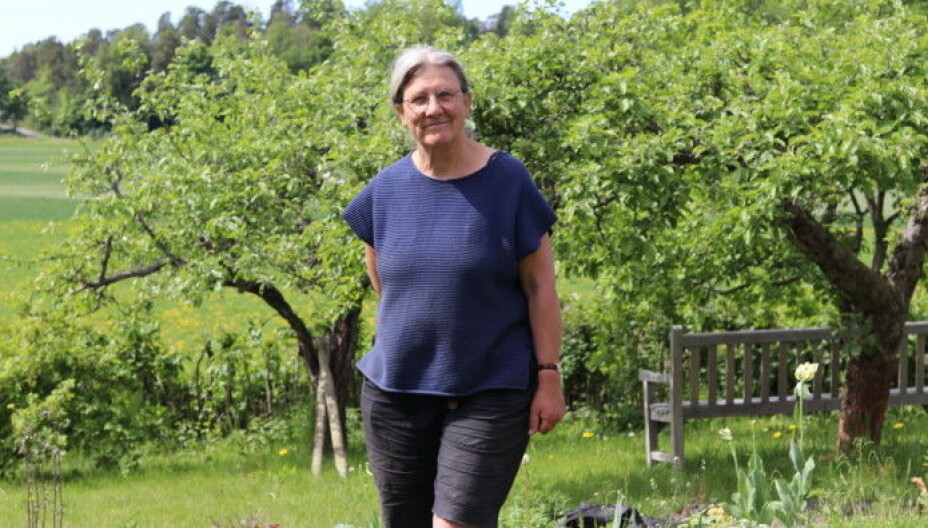
Leaves are transformed into soil for small plants
«The best potting soil for small plants, especially when you don’t want to use peat, is leaf compost», Jolly says. «This is perhaps the easiest compost to make.»
Hidden at the bottom of her meadow is a low, round wall filled with leaves.
«Here's mine, it just looks like a bunch of leaves. It has to be turned during the summer and it must be kept moist. Nothing happens when it's too dry», she says.
If it gets too dry, Jolly uses a sprinkler. You can also water the pile with a hose.
Jolly turns the pile now and then. This aerates the layers, and the leaves that have been on top are mixed into the middle.
«You can see in here that this is becoming soil», she says.
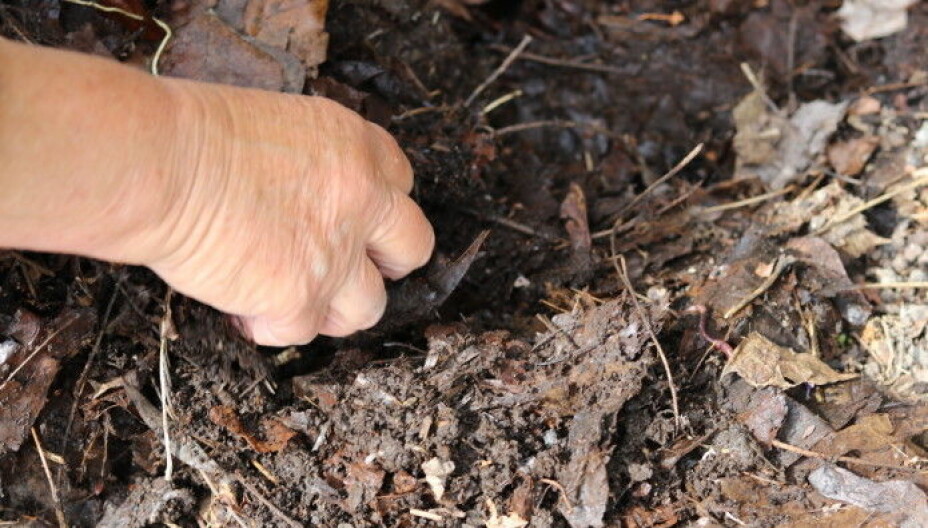
In the fall, she sieves the leaf compost so that the larger bits can be returned to the pile. Her sieve is made of metal netting with a wooden frame. She mixes what has become soil with finished leaf compost from the previous year in a can. Then she puts it in the cellar. Then it will be ready to for sowing seeds when the next growing season begins.
You want light, nutrient-poor soil for sprouting seeds, she says.
«Leaves are nutrient poor because the trees reabsorb nutrients before they drop their leaves, but leaves themselves are very fibre rich. Seedlings have what they need for nutrients in the seed itself, they don’t need so many nutrients. If they are over-fertilized, they can be attacked by fungi», she says.
Green and brown
«Oh, here's Turkish rocket, it's the number one enemy in many places in Oslo», says Jolly, pulling up the intruder with the Latin name Bunias orientalis.
She will destroy this particular weed, but everything else she puts in the compost.
Further up, Jolly and her gardening colleagues have assembled a bed of green plant material. Goutweed, Aegopodium podagraria, has spread down the hill from the house. It is pulled up and collected. The mound also contains what’s left of kale from earlier in the spring, as well as other green clippings. Little goes to waste.
The mound is in a nice line with an assemblage of dry plant material, roots and soil. A heap of cow manure that has already lost its most important characteristics lies next to the mound.
«What you need most at a compost site is a place to collect all the compost», she says.
The compost heap has the same oblong shape as all the other piles. This is where everything is mixed together and the magic happens.
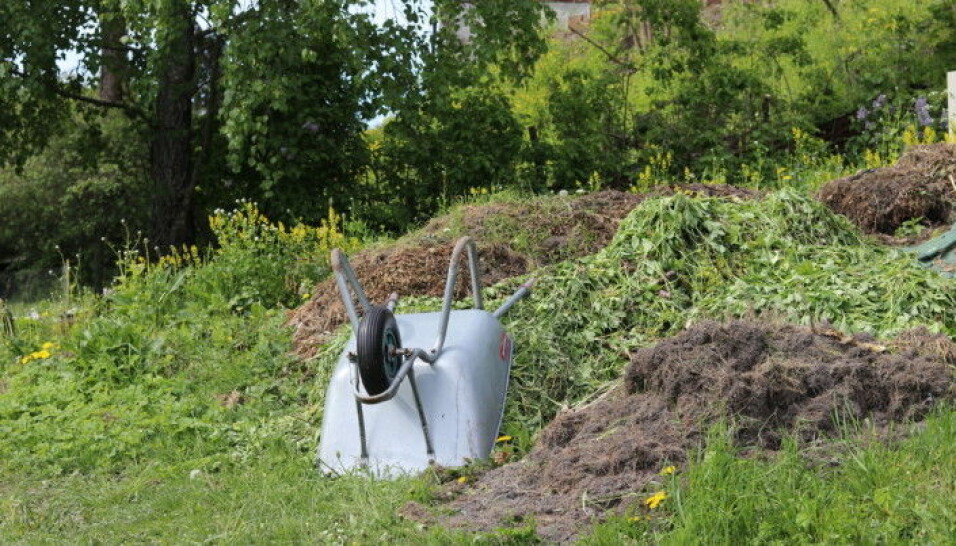
Layer upon layer
«When you make compost, you make it almost like a layer cake», Jolly says.
Fresh, green plant matter is layered with brown, dry plant matter. The simplest way to classify things is by whether they are green or brown. But that’s not quite right, because manure is counted in as green, she says.
«The brown breaks down slowly and the green quickly, the brown has a lot of carbon and the green has a lot of nitrogen», she says.
Things happen quickly when these two are in balance.
The brown can be material such as leaves, dried weeds, bark, dry turf, sticks and more. The sticks should preferably be split into smaller pieces, because twigs take longer to break down.
What’s left of the twigs is in another assemblage further away.
«It’s smart to have a twig pile, anyway, because it is home to a lot of insect life and animals,» Jolly says.
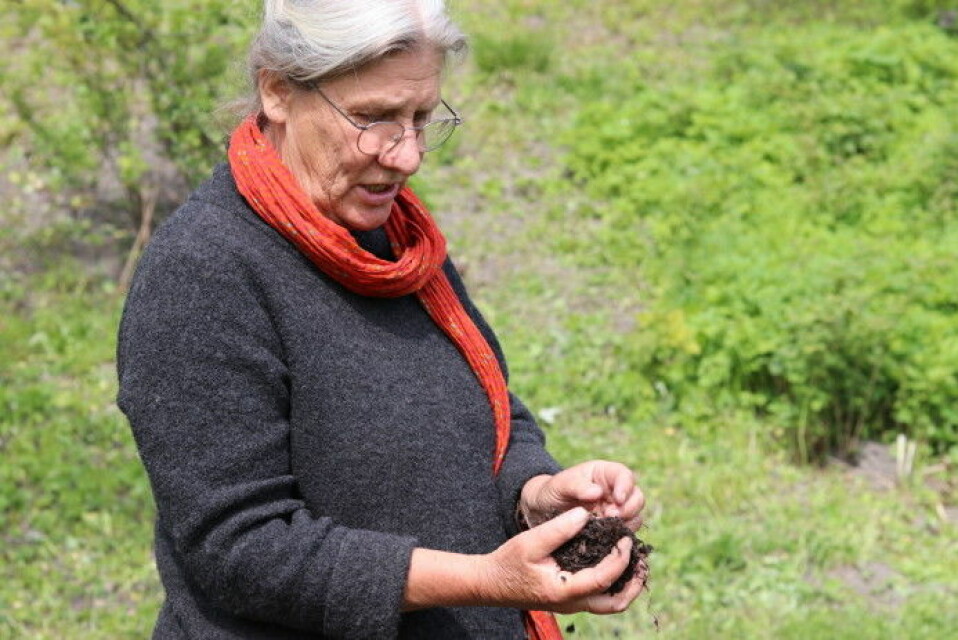
Can use a bin
A guide on composting published by Friends of the Earth Norway recommends that twigs be put at the bottom of the compost heap. This allows air access from below. It’s also a good idea to put some soil or finished compost in between some of the layers.
The same layer cake method can be used in a compost bin made from wood. This may fit better in smaller gardens, or if you want to hide your compost pile. In this case you should still put twigs in the bin and fill it with alternating layers of green and brown material.
The Friends of the Earth Norway guide recommends putting a lid, tablecloth or tarpaulin over the bin or pile so that the material does not get too wet or dry. It is also an advantage to keep the compost in a shady spot.
Fermented food scraps
Linda Jolly has one more technique in her back pocket, something called bokashi.
This is a method of composting food waste that originated in Japan. Food waste is put in an airtight bucket, then is mixed with pre-made bokashi seed, which contains wheat bran, molasses and a bacterial culture.
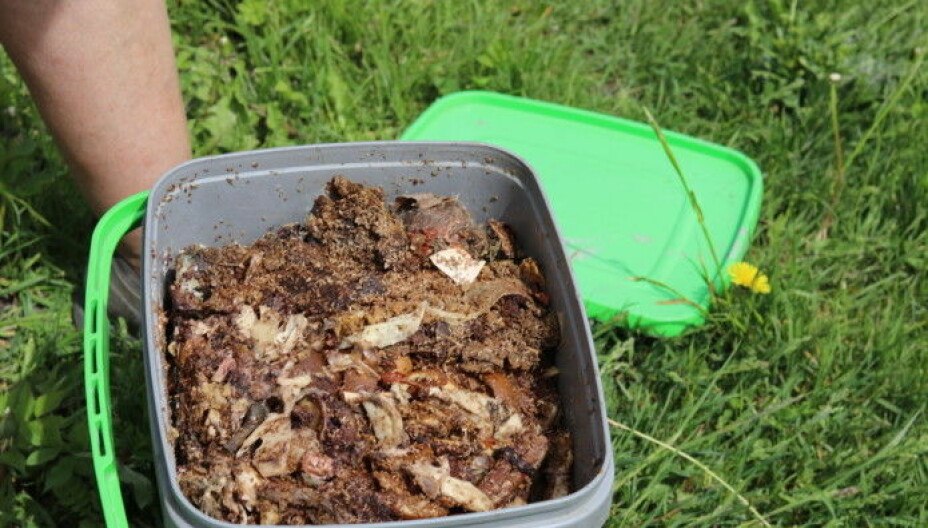
The leftovers ferment. When the bucket is full, the content is dug into the soil and the mass quickly turns into soil you can use for plants.
«It's easy to do», Jolly says.
You have to put your nose right into the bucket to smell the contents. It smells sour, a bit like pickles.
Jolly mixes her bokashi into her compost, and fills in layers of green and brown.
She stirs it up a bit. The fermented leftovers she put into the compost in the spring are no longer recognizable.
The whole mix provides good food for microorganisms and for the larger creatures, like the earthworm. These tumble out of the compost as thick as children's fingers.
The compost has to be turned if you want to speed up the process. The more you turn it, the faster it becomes soil. But a couple of times a year are enough.
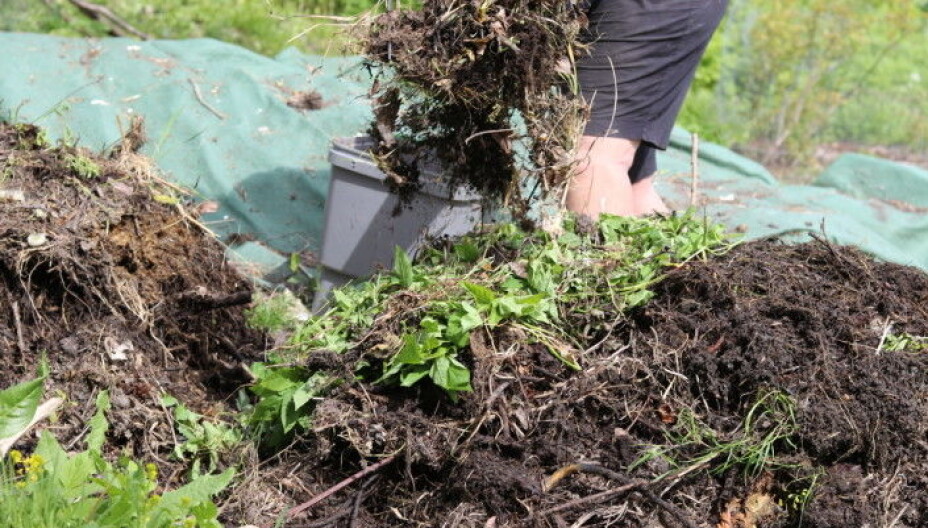
Warm compost, no smelly stuff
In addition to her cold compost, Jolly has warm compost for food scraps in an insulated bin.
All food wastes can be thrown in here, even what can’t be put in the bokashi bin, such as leftover soup.
The bottom is covered with coarse material, such as sticks, and often a few shovels of garden compost. Then you can add food waste. But you have to add some kind of litter each time. The main rule is three parts kitchen scraps and to one part litter.
The litter falls into the brown category. This can be everything from dry leaves, sawdust from non-impregnated material, straw, dried grass, other garden waste and even newsprint. It is also possible to buy litter intended for outhouses.
«You need to balance the mix with carbon. Kitchen waste generates a lot of water and contains a lot of nitrogen», Jolly says.
A container of material to sprinkle into the mix should be easily accessible so you can add some dry matter every time.
«The biggest problem with the bins is that people add kitchen waste without adding dry litter», says Jolly.
«Then it collapses and turns into a smelly wet mass. Then people won't have anything to do with it anymore», she says.
Once the compost looks more like dirt, it must be spread out and matured for a few months. Then it can be used.
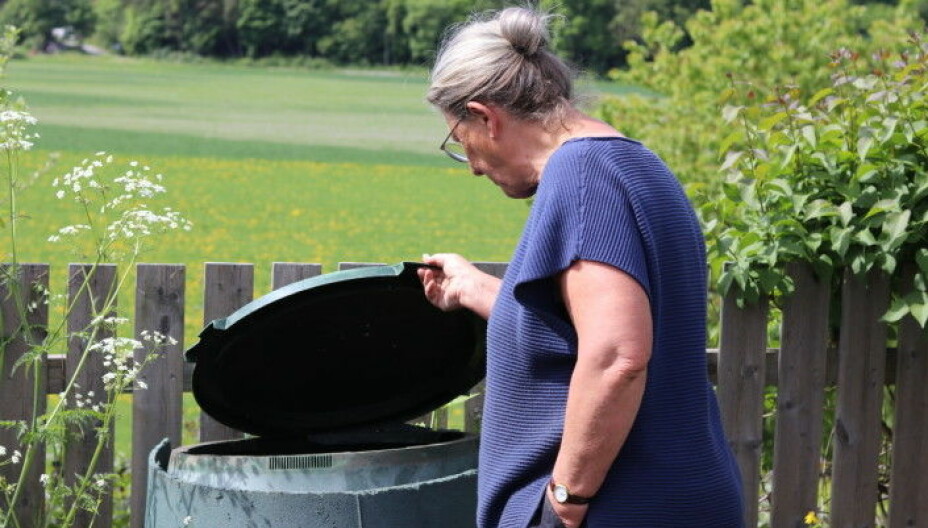
Making soil from leaves
Kirsty McKinnon is an advisor at the Norwegian Centre for Organic Agriculture. She has studied alternatives to peat in potting soil and holds courses in composting.
«The finest soil is the soil you make yourself», she says.
McKinnon also uses leaves to make soil for sprouting and planting. She has three bins for this purpose.
«I have a big, slightly open bin where I collect leaves. Then I have a slightly smaller bin for the following year because the volume has been so reduced», she says.
After three years her compost has matured and can be used.
Pierre-Adrien Rivier is a department engineer at the Norwegian Institute of Bioeconomy Research (NIBIO).
He recommends having more bins or piles for cold composting. If you constantly mix new material into the same pile, there will always be something that has not been completely transformed.
«The rule of thumb is that you fill up a bin for 6 months, then you start filling another one during the next 6 months. When the second one is full, you can use the compost from the first one, which has matured for 6 months», Rivier says.
Little risk with fish and meat
Several Norwegian municipalities will reduce the trash collection tax for people that compost their food waste in an approved container, McKinnon says.
She puts virtually all organic food waste into her compost.
«But you may need to be a really skilled composter if you are going to add fish waste and the like, because if you’re not careful, it can quickly get gooey and start to smell», she says.
Meat and fish should be mixed deep into the compost, where it is good and warm.
«You have to test things out a little so that there is enough moisture in the compost. You can use the pinch test. You take some compost in your hand and squeeze as hard as you can. If there is a little water, it is moist enough», she says.
Grass clippings can speed up a slow compost, both hot and cold.
«Grass clippings are good to use anyway. But if you have a lot of grass clippings, you have to mix it with some other, coarser material, otherwise there will only be a mound that is burning up. It can get very hot in grass very quickly», McKinnon says.
Great for the soil
Jolly gets a lot of benefits from the compost she makes in her garden.
«When it comes to preserving the soil structure and life in the soil, compost is fantastic», she says.
«It was basically heavy clay soil here», Jolly says, picking up a fist of soil from one of the vegetable beds.
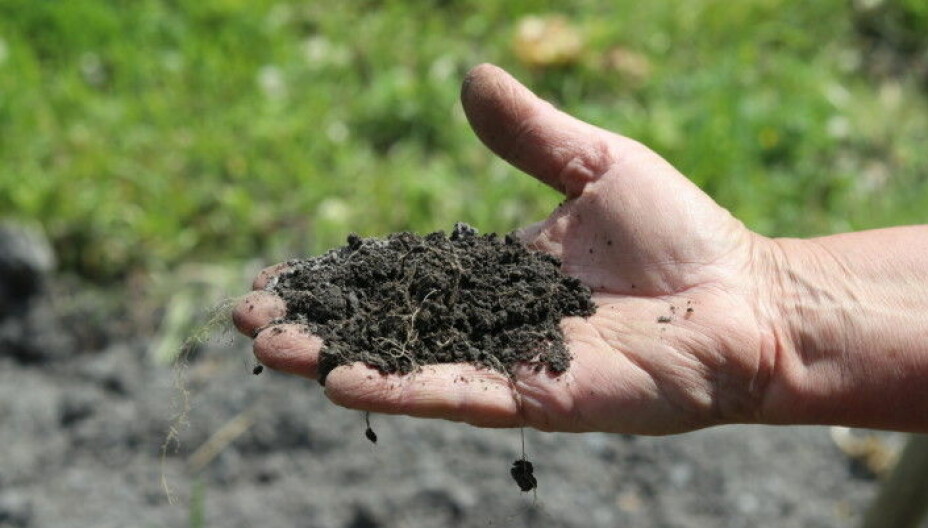
«But look at the structure of the soil now. It contains a lot of what are called aggregates, small round clumps of soil. That's what you want. The aggregates are stuck together with something that comes from the roots and from the microorganisms. They bind up water and nutrients and allow air in», she says.
There has been an increased amount of research of late on life in the soil, according to Jolly.
«We have not been so concerned with life in the soil after World War II. There was a good saying in Norwegian, ‘Mould is the farmer's gold’, but people forgot this. Now, attention to life in the soil has increased tremendously», she says.
Can composting reduce the need for environmentally harmful peat soil?
It depends on how the compost will be used, says Rivier.
«Pumpkin or squash can be grown directly in rich compost, but for most vegetables, the compost should be mixed with garden soil first», he says.
«It’s also important to understand that compost can be so many different things. For example, you can have a nutrient-rich compost from food waste that can be used as fertilizer. Or you may have a nutrient-poor compost made from garden waste, which acts as a soil improver to increase soil mould content.»
Garden compost does not contain as many nutrients as food compost and can be used in larger quantities without being mixed with other soil, according to Rivier.
And it’s possible to use compost to reduce your use of peat soil, which is sold commonly in Norway as a soil amendment.
Rivier says the peat soil that Norwegians buy at the gardens store is mainly for planting seeds before transplanting them outside, or for indoor green plants. Unfortunately, filling raised beds with this kind of soil is often an expensive waste, he says.
«People like having raised beds for growing vegetables, but most of the time they don't need them at all. Raised beds are useful when the soil at home is not deep enough. If you already have 30-40 cm of soil, I would definitely not recommend raised beds», he says.
If you are going to fill a raised bed, Rivier recommends using garden waste compost from a recycling station and mixing it with nutrient-rich compost you have made at home, or, for example, chicken manure from the store.
Is it environmentally friendly?
Are there environmental benefits to composting yourself, or is it really better if the food waste is delivered to the municipal system recycling?
«The food waste delivered to biogas plants is handled under optimal conditions, and greenhouse gas emissions are controlled. The leftovers from biogas plants are returned to farmers and added to the soil to feed plants. In your own garden, if things are not handled properly, you can get ‘anaerobic pockets’ and unwanted methane emissions», says Rivier.
Anaerobic pockets and methane emissions can be avoided by mixing in enough coarse carbon material and mixing compost often enough, Rivier says.
If you don't use your compost, but just leave it, it becomes ‘wasted nutrients’, the researcher says.
«But I still think it's very important that people who want to try to compost, do it. Making our own compost links us to our food, to soil and to nutrient cycles. It transforms our food waste from a waste to a resource. When people make good compost, it could be their first step to growing their own food», he says.
Translated by Nancy Bazilchuk
———































